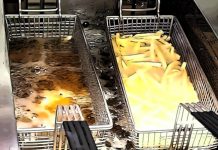The European Parliament has definitively adopted the regulation banning the sale, import and export of goods made with forced labour. The regulation is part of the series of regulations envisaged by the European Union to promote respect for human rights and the environment at a global level, as also provided for by the Corporate Sustainability Reporting Directive. (1)
A regulation against forced labor
According to the data of the International Labor Organization, almost 28 million people are forced into forced labor. Of these, 39,4% are women and girls while 12% are children. The exploitation of these people generates an illicit profit of 236 billion dollars every year. (2)
The European Commission in 2022 it proposed a regulation to prohibit the placing on the market of products obtained through the exploitation of workers, regardless of the place of production. The regulation, in April 2024, was adopted by the European Parliament with 555 votes in favour, only 6 votes against and 45 abstentions. (3)
Competent authorities
Each member state designates a competent authority to carry out the tasks foreseen by the regulation, so that no product obtained with forced labor enters the European market or is exported. The authorities work together with the Commission to ensure the application of the Regulation across the Union (Article 5).
The European Union at the same time establishes a network on the products of forced labor. It will serve as a platform for coordination and cooperation between state authorities and the Commission. The network will be composed of national authorities and representatives of the Commission and other competent authorities of the Member States, experts and stakeholders will also be able to participate in the meetings depending on the issue being addressed (art. 6)
Portals on labor exploitation
The Commission establishes a database that provides indicative, evidence-based, verifiable and regularly updated information on the risks of forced labor in specific geographical areas or in relation to specific products or groups of products. The database will be easily accessible to the public and available in all languages of the Union (Article 8)
The alleged violations of the regulation may be submitted through the single information transmission point that the Commission establishes, available in all the official languages of the Union and free of charge. The infringement information must be accompanied by evidence and, if possible, supporting documents and the Commission will have the right to reject information that is manifestly incomplete, unfounded or presented in bad faith. (art. 9)
Opening of investigations, article 14
The opening of the investigation must follow the risk-based approach. The authorities then take into consideration the following criteria:
- the extent and severity of the alleged forced labor, including fear of possible state-imposed forced labor,
- the quantity or volume of products placed on the Union market,
- the percentage of the part of the product suspected to be made with forced labor compared to the final product.
The evaluation of probability that the regulation has been violated is based on relevant, factual and verifiable information. A non-exhaustive, illustrative list of such information is available in Article 14(3).
The decisions of the Authority
The investigations must be completed within a reasonable expected period of 9 months. If the products are found to be in breach of the regulation, the authorities adopt a decision containing:
- the prohibition on placing or making available on the market such products,
- the order to the economic operator concerned to withdraw such products already placed on the market,
- the order to dispose of (4) the products or the part of the products obtained through forced labor.
If the products in question are part of a strategic supply chain for the Union, the competent authorities may order that the product concerned be retained for the time necessary to eliminate forced labor from the supply chain in question, at the expense of the operators.
Sanctions, article 37
The penalties they are decided by the Member States and must be effective, proportionate and dissuasive. They must also take into account:
- the severity and duration of the violation,
- any violations of the same type previously committed by the economic operator,
- the degree of cooperation with the authorities,
- any applicable mitigating or aggravating factors.
A regulation against fast fashion
The rules applies to any product that can be valued in money and which, as such, can be the subject of commercial transactions, regardless of whether it is extracted, harvested, produced or manufactured, including processing or transformations related to a product at any stage of its supply chain (Article 2(f).
Samira Rafaela, liberal MEP from the Netherlands and rapporteur of the regulation, refers above all to the world of fast fashion and the related exploitation of workers imposed by the state, in particular by China. Many European clothing brands, including Zara and H&M, source materials produced by Uighur people detained in detention camps in Xinjiang. (5)
Exploitation in agriculture
Another sector affected by the exploitation of workers is agriculture. According to the new forecasts, rice from Burma, obtained through the exploitation of the Rohingya community, or Chinese tomato paste from Xinjiang will no longer be allowed to enter the European Union. The same rigor must be applied within European borders.
Italy is no stranger to the exploitation of agricultural workers. According to data from the VI Report on agromafia and gangmastering of the Placido Rizzotto Observatory of the Flai CGIL, in 2021 there were around 230 thousand irregular workers in Italian agricultural companies, victims of gangmasters and entrepreneurs. (6) Let’s see if things will change with the application of the regulation, which will take place the third year following its entry into force.
Alessandra Mei
Footnotes
(1) Dario Dongo, Alessandra Mei. Corporate Sustainability Reporting, the new EU directive is underway. GIFT (Great Italian Food Trade). 2.12.2022
(2) International Labut Organization. Data and research on forced labor. https://www.ilo.org/topics/forced-labour-modern-slavery-and-human-trafficking/data-and-research-forced-labour
(3) Text of the adopted regulation https://www.europarl.europa.eu/doceo/document/A-9-2023-0306-AM-177-177_IT.pdf
(4) Disposal, in accordance with Article 25 of the Regulation, must take place through recycling or, if not possible, making the products unusable. In the case of perishable products, disposal must take place by donating the products for charitable or public interest purposes or, if this is not possible, by making the products unusable.
(5) Vincenzo Genovese, Paula Soler. The European Parliament has approved a ban on the sale of products made with forced labor in the EU. EuroNews. 23.3.2024
(6) Placido Rizzotto Observatory. VI Report on Agromafie and Gangmastering. https://www.fondazionerizzotto.it/vi-rapporto-agromafie-e-caporalato/
Graduated in Law from the University of Bologna, she attended the Master in Food Law at the same University. You participate in the WIISE srl benefit team by dedicating yourself to European and international research and innovation projects.








